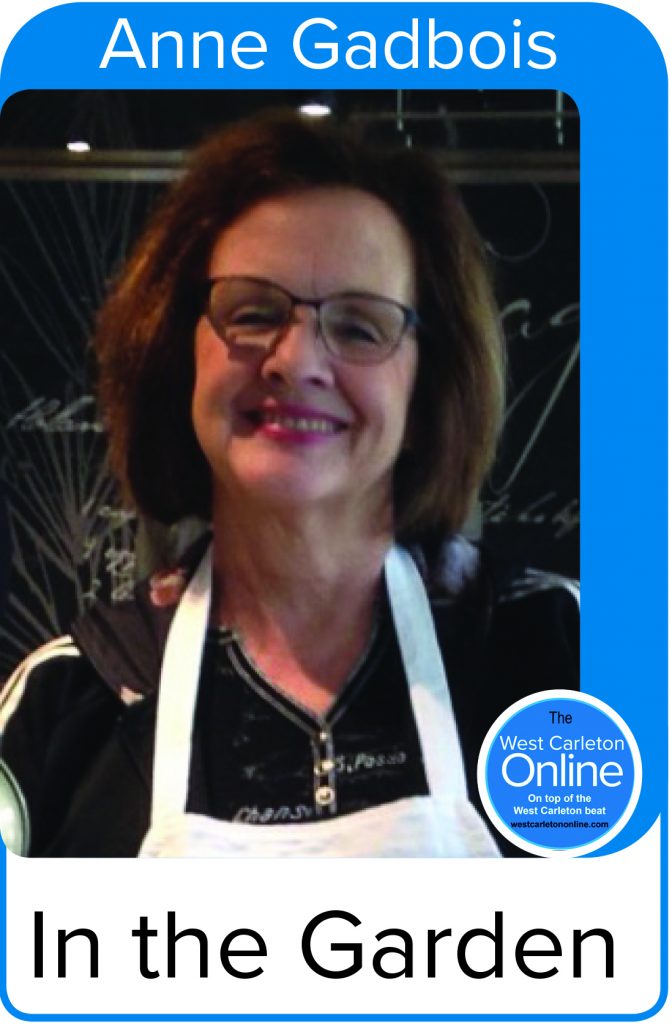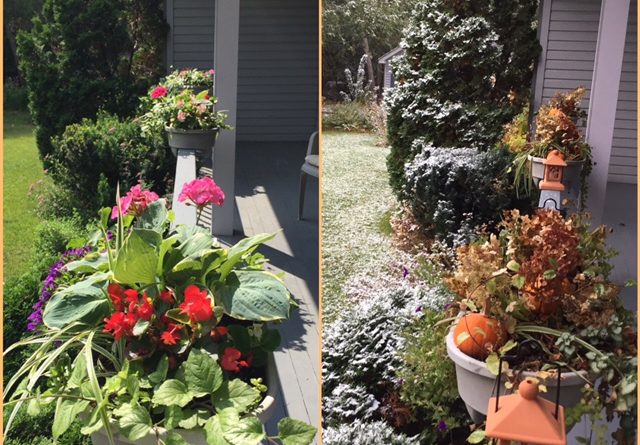Gadbois: As we wait for winter
By Anne Gadbois for West Carleton Online
I read an article in the online New York Times newsletter last week about tips on how to create your own herbal tea garden. The harsh reality is that I woke up to a light dusting of snow which made the yard look festive and bright but deep down, my heart sank because it also means the end of the 2020 growing season.

While I wish I had had the tea garden idea this past spring instead of now – maybe I would be sipping some home grown herbal concoction as I write – this new/old gardening trend makes me ponder what I can be introducing to my garden next year. See how quickly this gardener’s spirits can be uplifted? My gardening plans are already starting to take shape for 2021. There is hope.
Thankfully, fall garden chores are done – last mow, the undoing of containers, splitting of perennials, removing and storing pots, potting table, trellises, bird baths and garden art which do not over-winter successfully, the disconnecting pool and pond pumps, and the bringing in of tender plants.
What worked and what didn’t in 2020
Taking stock of gardening successes and failures is good to do at this time because we can still see most of the plants in the garden and if we have taken reference pictures along the way to document emersion and growth, it’s even better. I have noticed this past summer’s dry period tended to favour native wildflowers which I encourage anyway (daisies, violas, goldenrod, asters), but the introduced hostas, garden phlox, rudbeckia and lisimachia did well overall too. My roses did not prosper though, and the earlier blooming hydrangea was sadly, pitiful but the later ones were glorious.
Seasonal change
Phenology is the study of seasonal change. It can give important data about how species adapt to climate change and weather. It notes events such as when buds burst, first flowering and first fruit of particular plants in specific places in the garden. It notes the arrival of migratory birds in the spring and their flight away in the fall, the arrival of spring insects, the emergence from hibernation of native mammals, etc. I’m starting to keep a notebook about the seasons in my garden, this will complement the pics I take on a regular basis. It’s instructive and engaging to observe and to note the subtle changes from year to year and then over time to see patterns and trends. (A good reference book for this is Ground Truth: A Guide to Tracking Climate Change at Home by Mark L. Hineline, The University of Chicago press, 2018).
A keen eye is required to keep phenological records, but gardeners have keen eyes, and we are naturally attracted to small details about the plants in our surroundings. This summer has been especially conducive to observing nature, what with the unusual limitations placed upon us by the COVID-19 pandemic – we had more time and a desire to be outside.
I don’t expect my amateur recordings will be snapped up by large phenological databases anytime soon, but at least for me, these observations will be interesting and will encourage me to identify more closely the various insects, plants and animals which cohabit with us in our landscape. One of the exercises Mr. Hineline suggests before we embark upon this activity is to simply walk out our front door on a nice day and take a walk.
Take note, mentally or on paper or picture, of all living things – trees, flowers, bushes, insects, birds – that we think are part of nature. He says don’t be worried if we think this is a gratuitous exercise, because no doubt we will discover things we had never noticed before. In my experience, I routinely discover new things – a tree, a bush, a lichen – which I cannot identify properly, and this prompts me to conduct a little bit of research. I will keep a journal of my observations and will have the satisfaction of discovering new things along the way. From there over time, we will gradually move on to notice the patterns of the seasons, and the year upon year changes in nature. It is a long-term commitment, this examination of incremental change at the micro level.
Long and distanced winter months ahead
Normally at this time, as nature retreats, the horticulture groups swing into full gear. This is counterintuitive because you would think they would meet mainly in the summer months. Too busy! The winter months, a downtime for gardeners, are usually filled with horticullture club general meetings, presentations and social get togethers. Not this year because of the pandemic, so what to do to keep sharing our love of gardening with like-minded people? Most garden groups have an online presence, and many are now hosting virtual events through various social media, such a Facebook and Instagram, and meetings with technologies such as Zoom.
To keep in touch, I visit some of the following links on a regular basis, have registered for many of their online newsletters and have attended some of their zoom meetings:
- https://gardeningcalendar.ca Along with a calendar of events, this internet site provides tons of interesting articles on every aspect of gardening in our area and province, and links to other resources.
- Internet sites and Facebook Pages for the Master Gardeners of Ontario, of Ottawa-Carleton and of Lanark County. You have to be Facebook members to access these, but they provide an excellent ongoing topical forum for gardening questions from the public.
- Internet sites and Facebook pages from the local horticultural groups, such as the West Carleton Garden Club (the FB and Instagram pages which I curate), the Stittsville-Goulbourn club, and the Almonte and Packenham clubs are also good sources of events and information.
The winter will be different this year, contacts will be lessened, but there is still lots to do and learn. The trick is to bundle up, try to get outside as much as possible, get some exercise and embrace the brisk weather. After all, we gardeners are hardy folk and don’t shy away from the elements. Now, I’m thinking of sowing a small indoor tea garden, in pots, while waiting to plant the real one in the garden next spring.
Stay calm, warm and safe!
Anne Gadbois is a long-time member of the West Carleton Garden Club and its past president. Gadbois, who lives in Corkery Woods. Anne writes on the wonders and challenges of gardening in our large, geographically diverse area.










